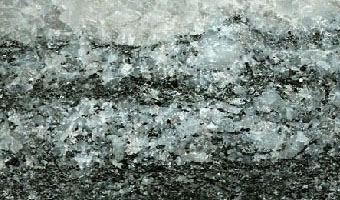Quartz diorite on:
[Wikipedia]
[Google]
[Amazon]
 Quartz diorite is an
Quartz diorite is an
Definition with images
Plutonic rocks ja:閃緑岩#石英閃緑岩 {{igneous-rock-stub
 Quartz diorite is an
Quartz diorite is an igneous
Igneous rock ( ), or magmatic rock, is one of the three main rock types, the others being sedimentary and metamorphic. Igneous rocks are formed through the cooling and solidification of magma or lava.
The magma can be derived from partial ...
, plutonic ( intrusive) rock
Rock most often refers to:
* Rock (geology), a naturally occurring solid aggregate of minerals or mineraloids
* Rock music, a genre of popular music
Rock or Rocks may also refer to:
Places United Kingdom
* Rock, Caerphilly, a location in Wale ...
, of felsic
In geology, felsic is a grammatical modifier, modifier describing igneous rocks that are relatively rich in elements that form feldspar and quartz.Marshak, Stephen, 2009, ''Essentials of Geology,'' W. W. Norton & Company, 3rd ed. It is contrasted ...
composition, with phaneritic
A phanerite is an igneous rock whose microstructure is made up of crystals large enough to be distinguished with the unaided human eye. In contrast, the crystals in an aphanitic rock are too fine-grained to be identifiable. Phaneritic texture fo ...
texture. Feldspar
Feldspar ( ; sometimes spelled felspar) is a group of rock-forming aluminium tectosilicate minerals, also containing other cations such as sodium, calcium, potassium, or barium. The most common members of the feldspar group are the ''plagiocl ...
is present as plagioclase
Plagioclase ( ) is a series of Silicate minerals#Tectosilicates, tectosilicate (framework silicate) minerals within the feldspar group. Rather than referring to a particular mineral with a specific chemical composition, plagioclase is a continu ...
(typically oligoclase
Oligoclase is a rock-forming mineral belonging to the plagioclase feldspars. In chemical composition and in its crystallographic and physical characters it is intermediate between albite ( Na Al Si3 O8) and anorthite ( CaAl2Si2O8). The albite:ano ...
or andesine) with 10% or less potassium feldspar. Quartz
Quartz is a hard, crystalline mineral composed of silica (silicon dioxide). The Atom, atoms are linked in a continuous framework of SiO4 silicon–oxygen Tetrahedral molecular geometry, tetrahedra, with each oxygen being shared between two tet ...
is present at between 5 and 20% of the rock. Biotite
Biotite is a common group of phyllosilicate minerals within the mica group, with the approximate chemical formula . It is primarily a solid-solution series between the iron- endmember annite, and the magnesium-endmember phlogopite; more al ...
, amphibole
Amphibole ( ) is a group of inosilicate minerals, forming prism or needlelike crystals, composed of double chain tetrahedra, linked at the vertices and generally containing ions of iron and/or magnesium in their structures. Its IMA symbol is ...
s and pyroxene
The pyroxenes (commonly abbreviated Px) are a group of important rock-forming inosilicate minerals found in many igneous and metamorphic rocks. Pyroxenes have the general formula , where X represents ions of calcium (Ca), sodium (Na), iron ( ...
s are common dark accessory minerals.
Quartz diorite occurs in association with other granitic rock such as granodiorite
Granodiorite ( ) is a coarse-grained (phaneritic) intrusive igneous rock similar to granite, but containing more plagioclase feldspar than orthoclase feldspar.
The term banatite is sometimes used informally for various rocks ranging from gra ...
, and with volcanic
A volcano is commonly defined as a vent or fissure in the crust of a planetary-mass object, such as Earth, that allows hot lava, volcanic ash, and gases to escape from a magma chamber below the surface.
On Earth, volcanoes are most often fo ...
rock. In western North America a "quartz diorite line" occurs; west of this line, the dominant granitic rock is quartz diorite.
References
Definition with images
Plutonic rocks ja:閃緑岩#石英閃緑岩 {{igneous-rock-stub